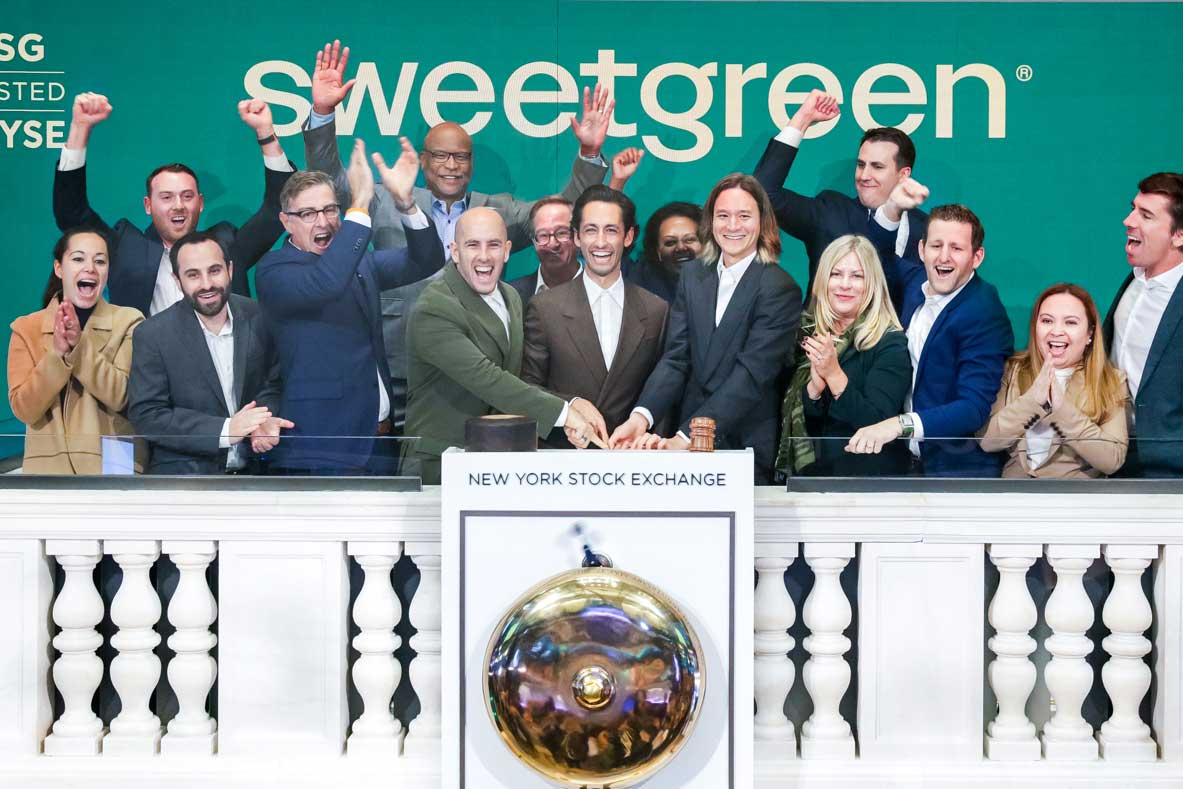Jonathan Neman, Nicolas Jammet, and Nathaniel Ru, Sweetgreen at the NYSE, November 18, 2021
Source: NYSE
In a year with a spate of restaurant IPO stocks, Sweetgreen — one of the late entries — may have an exciting year ahead, building a new category on the strength of its tech investment.
After a rough 2020, restaurant stocks performed better the following year as vaccinations and loosened restrictions lifted investors’ confidence in the industry.
Swept up in that optimism, five restaurant companies, including Krispy Kreme and Dutch Bros, had their initial public offerings with mixed results.
Salad chain Sweetgreen only debuted in mid-November and it has yet to report quarterly earnings. It went public at $28 a share — soared 76% its first day of trading — but has since fallen amid fears over the Covid omicron variant. It was trading mid-afternoon Friday at about $32 a share.
But some observers see a lot of upside to the stock for 2022.
“Sweetgreen is in the early stages of creating a new category in the restaurant industry, an opportunity that comes along roughly once every decade following the IPOs of [Starbucks] in 1992, [Chipotle Mexican Grill] in 2006 and [Wingstop] in 2015,” Cowen analyst Andrew Charles wrote in a note to clients on Dec. 13.
What’s more, Sweetgreen has two key ingredients going forward: consumer-facing technology and transparent food-sourcing, Charles said.
Sweetgreen is the first fast-casual salad chain to go public, but it likely won’t be the last. A flurry of rivals like Chop’t, Just Salad and Dig are waiting in the wings with millions of dollars from fundraising.
Goldman Sachs analyst Jared Garber initiated the stock as a buy with a $48 per share price target, saying the company is at the forefront of technological innovation and integration in the restaurant industry, despite its small size. More than two-thirds of Sweetgreen’s sales come from digital transactions, and the company bought robotics company Spyce earlier in 2021.
For Sweetgreen investors, the chief question is whether it can expand into the suburbs beyond its core coastal urban markets before its rivals become a larger threat to its market share.
Morgan Stanley analyst John Glass also wrote in a note to clients that Sweetgreen’s unprofitability could be a concern for some investors, given that the majority of publicly traded restaurants are profitable.
In 2021, Sweetgreen rebounded from pandemic lows, narrowing loses to $86.9 million from a year-earlier loss of $100.2 million, as of Sept. 26. Same-store sales rose 21% during that period.
The coming year is expected to yield more IPOs in the restaurant industry, with P.F. Chang’s reportedly in talks to go public and Panera Bread said in November that it’s planning to return to the public markets.
